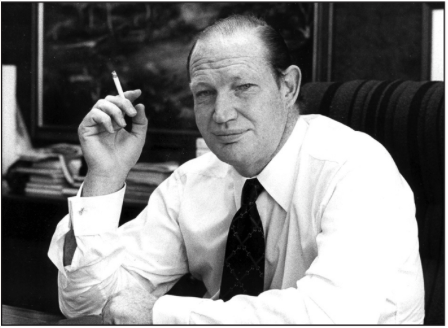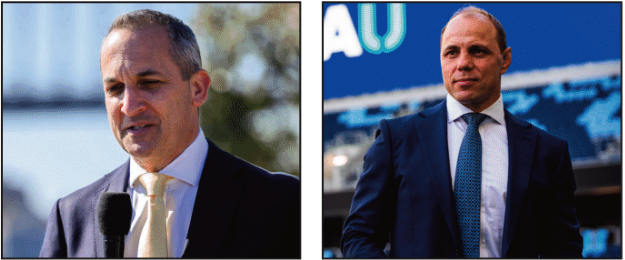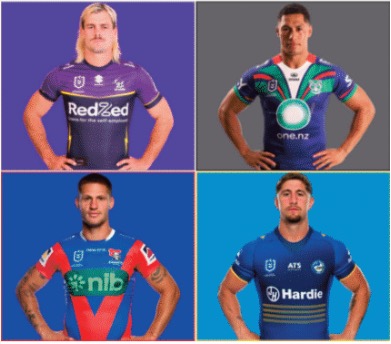Ryan Papenhuyzen, Roger Tuivasa-Sheck, Kalyn Ponga and Zac Lomax are just four of the big names who the intruding R360 has their eyes on.
For decades, the professional rugby and rugby league landscape has been defined by its established hierarchies: the mighty NRL in Australia, the storied European club competitions, and the revered international Test arena.
Players, while well-paid, largely operated within these fixed structures, their earnings tethered to the revenue-sharing agreements of their respective codes. But a storm is brewing on the horizon, one fuelled by unfathomable wealth and an audacious vision for a “Grand Prix” style global competition: Rugby 360 (R360).
This proposed rebel league, with its promise of “less work, more money,” has ignited a bidding war for talent, exposing the financial vulnerabilities of traditional rugby and, in a fascinating twist, effectively crowning the players as the undisputed, guaranteed winners in this high-stakes game.
The Self-Inflicted Wound: NRL’s History of “Cheapness”
For critics, the NRL’s current financial crisis is not an unfortunate circumstance, but a direct result of decades of financial conservatism that prioritised the league’s balance sheet and club grants over paying players a truly market-competitive wage.
“The NRL’s cheapness is the very thing that has left it vulnerable to a poaching, wealthy league like R360,” argues one veteran player agent.
“If the players had been given a fair cut of the revenue in the past, R360 wouldn’t look half as attractive.”

This argument is backed by clear financial comparisons, particularly against its primary domestic rival, the AFL, and global sporting behemoths:
• Average Salary Comparison: For years, the average NRL player’s salary has significantly lagged behind the AFL. While recent Collective Bargaining Agreements (CBA) have closed the gap, the NRL’s top salaries remain modest when compared to global sports.
• The Revenue Divide: More damning is the comparison of how much of the game’s revenue is shared with the players. Historically, the NRL’s share of revenue allocated to players has hovered around 28-30%. In stark contrast, players in major North American leagues like the NFL and NBA command a share closer to 50% of all revenue. Even the AFL pays a higher percentage of its income back to its athletes. While the NRL has defended its conservative approach as necessary to support struggling clubs and fund grassroots development, the result is clear: a league with a high-quality, high-risk product that pays its top-tier athletes less than what the market arguably dictates.
This created a massive, exploitable pay gap—a vacuum that R360, with its deep-pocketed investment firm backing, has readily stepped into.
“The R360 offer isn’t just about making money; it’s about making up for the money that players believe they should have already earned,” the agent added.

The $600 Million Question: Misdirected Funding
The financial decisions of the NRL are under particular scrutiny, given the recent landmark deal to secure an estimated $600 million in funding from the Australian government. This money, largely ear-marked to underpin the creation of a Papua New Guinea (PNG) expansion team and related grassroots and socio-economic programs in the Pacific, highlights a critical, strategic misstep that preceded the R360 threat.
Critics argue that a portion of this half-a-billion-dollar-plus windfall—money the players directly generate through the game’s massive media rights—should have been invested closer to home to insulate the league against a threat like R360:
1. Competitive Player Wages: A fraction of the funding could have gone towards significantly lifting the current salary cap and boosting player wages to reflect their value compared to global codes, removing the financial incentive for stars to look overseas.
2. Infrastructure and Youth Pathways: A more strategic focus on Australian rugby league’s existing ecosystem was sorely missed. Funds could have been directed to help current clubs and their cities establish stronger youth lines and upgrade local facilities. These investments would not only improve the working conditions for players but also upgrade the quality of the league’s player pipeline in future years, naturally bringing in more viewers and money due to the resulting higher quality of competition. Instead, the NRL directed a major financial focus on a geo-political expansion project, leaving the game’s core player base and domestic infrastructure exposed to a financial poaching threat that could tear the competition’s existing talent pool apart.

Shades of 1977
The declaration, issued jointly by the Tier 1 unions—including England, New Zealand, Australia, and South Africa—forces players to make a profound choice: generational wealth or the cherished national jersey.
The Ban: A Calculated Act of Desperation
The unions’ ultimatum is a direct response to R360’s devastating financial pitch: a reported A$1.5 million to A$3 million per season for top players, often tax-free, for a significantly shorter, less physically demanding season. This offer, the ultimate lure of “Less Work, More Money,” is a financial tipping point for players across both Rugby Union and Rugby League.
The ban on Test selection aims to de-fang R360’s financial lure by removing the sport’s greatest competitive aspiration. R360 organisers have insisted they will release players for national duties, but the major unions have flatly rejected this, stating participation in the rebel circuit itself will result in ineligibility.

The situation is almost an exact replica of the cricket war caused in 1977 by the man pictured (Kerry Packer).
The Echo of Kerry Packer
The dramatic confrontation is not a new phenomenon. It is a near-perfect replica of the 1977 Kerry Packer World Series Cricket (WSC) war, illustrating that the institutions of traditional sport have learned little about pre-empting revolution.
1977 World Series Cricket – 2025 R360 Rugby Rebellion
The Rebel’s Weapon – Massive, unprecedented salaries to lure players away from the traditional establishment. Massive, potentially tax-free salaries to lure players with promises of shorter, less grueling seasons.
The Establishment’s Response – The International Cricket Conference (ICC) declared WSC matches “disapproved” and banned all participating players from Test cricket. Eight Tier 1 Rugby Unions issued a joint declaration banning all R360 players from international selection.
The Outcome (Historical) – The ban temporarily weakened Test cricket, forcing the establishment to eventually capitulate and integrate Packer’s innovations and pay structures, permanently empowering the players.
The ban has immediately shifted negotiating power to the players, forcing the NRL and unions to increase compensation and address player welfare issues.

The Inevitable Player Exodus: Tax-Free Dollars and Dual-Code Leverage
The sheer financial lure of R360, particularly its tax-free compensation model, makes an exodus of talent unavoidable, regardless of any sanctions the NRL may threaten.
• High-Level Talent: For the game’s elite, the decision is simple: move to R360 for a guaranteed salary that is likely to be double their current NRL wage, completely tax-free, for a significantly shorter and less physically demanding season. This equates to an immediate, life-changing financial windfall.
• Lower-Grade Players: Crucially, this exodus will not be limited to superstars. The R360 and other codes’ global expansion (such as the English Super League’s increased overseas quotas) will extend down to the next tier of talent. A rising or fringe NRL player, earning A$150,000, can now move to R360 or an overseas club and double their wage overnight. This money, combined with the professional platform it provides, is too compelling to ignore. Furthermore, a highly skilled footballer who excels in R360’s format gains a strong platform for a potential return to the NRL in the future, or to attract similar lucrative offers from the national-level 15-man Rugby Union game. This creates a legitimate pathway that offers both immediate financial gain and future career leverage, leaving the NRL’s entire depth chart exposed.

A Fixture Nightmare: The Folly of 19 Teams
The NRL has dramatically shot itself in the foot with its rigid and strategically flawed expansion plans. The league is currently committed to a competition of 19 teams (the existing 17 plus the Papua New Guinea franchise and one other), which presents an immediate and perpetual logistical headache:
• The Bye Problem: A league with an odd number of teams forces one side to have a bye every single week of the season. This creates a scheduling nightmare, distorts competition integrity, and is a poor outcome for broadcast partners and fans who want a full slate of matches.
• The Contraction Conundrum: The player drain to R360 and other leagues means the NRL will struggle to fill 19, let alone the desired 20, competitive team rosters. To save the fixture and maintain competition integrity, the NRL would need to contract the competition to 18 teams or move aggressively to 20 teams. To contract would require the removal of at least one current club, which is a public relations and political disaster in and of itself.

• Sacrificial Lambs: While no team’s removal is palatable, only a few clubs could even be considered, exposing the incompetence of the league’s strategic planning. Teams like the Gold Coast Titans—plagued by consistently low membership bases and a history of onfield mediocrity—are logical targets. However, with the NRL’s focus on regional representation, even the North Queensland Cowboys, despite a secluded stadium, would be an emotional and economically damaging loss for North Queensland.
The problem is that without a clear, obvious club to remove, the league is trapped. It is being forced to try and fill two to three new team rosters (for 19 or 20 teams) at the exact moment a wealthier, global competitor is poaching its most valuable assets. The NRL’s previous financial prudence has left it with a bloated, poorly structured competition that may soon be lacking the quality of talent required to fill it.
The Seismic Threat: “Less Work, More Money”
R360’s pitch is simple yet devastatingly effective: imagine a condensed season, perhaps two intense blocks totalling five months, played in iconic stadiums across global hubs like London, Tokyo, Dubai, and Miami. In return for this reduced workload, R360 is reportedly tabling contracts ranging from A$1.5 million to an astonishing A$3 million per season for top-tier players.

Compare this to the NRL, where even the highest earners typically top out around A$1.2 million.
Factor in the tantalising possibility of these R360 salaries being paid from low-tax jurisdictions like Dubai, and the net take-home pay becomes exponentially more attractive.
Players are staring down the barrel of financial security on an unprecedented scale, and for a significantly less punishing physical toll than the relentless, 8-month grind of an NRL season.
“It’s an incredible proposition for players,” commented one prominent player agent, who wished to remain anonymous due to the sensitivity of ongoing negotiations, when speaking with the ABC.
“They’re being offered generational wealth for a shorter, perhaps more glam-orous career. How do you say no to that?”
Indeed, the allure is proving irresistible. Reports suggest well over 100 players across both rugby league and union, including current Wallabies, former All Blacks, and a slew of NRL stars, have already signed “conditional agreements” or “Heads of Agreement.”
While not legally binding contracts, these documents signal a player’s clear intent to jump ship should R360 officially launch.

The NRL’s Battle for Retention: Fear and Funding
For the NRL, the R360 threat is nothing short of existential. ARLC Chairman Peter V’landys has likened it to the Super League war of the 1990s, where rival competitions ripped the heart out of the game with huge offers and bitter court battles. This time, however, the NRL is proactive, employing a multi-pronged strategy mixing tactical funding with a healthy dose of “fear factor.”
“We understand the lure of big money, but players need to do their due diligence,” V’landys stated recently, questioning R360’s long-term business model and stability. This is the cornerstone of the NRL’s “fear factor” campaign: painting R360 as a risky, unproven venture that could leave players stranded if it folds, as some rebel leagues have in the past.
The cautionary tale of LIV Golf, which has faced its own struggles despite massive investment, serves as a quiet warning. But fear alone won’t retain superstars like Ryan Papenhuyzen, Zac Lomax, or Roger Tuivasa-Sheck, all of whom have reportedly engaged in discussions with R360.
The NRL is therefore dipping into its substantial operating surplus to bolster its financial defences.
 NRL CEO Andrew Abdo (left) and Rugby Australia CEO Phil Waugh (right) have a fight on their hands as R360
NRL CEO Andrew Abdo (left) and Rugby Australia CEO Phil Waugh (right) have a fight on their hands as R360
talks heat up.
Instead of dismantling the sacred salary cap, which ensures competitive balance, the NRL is looking to expand “off-cap” allowances. This could include significantly larger, centrally funded “Marquee Player Allowances” or “Retention Funds” that allow clubs to offer their stars top-tier money (A$1.5M+) without crippling their ability to build a full, competitive roster. Increased representative payments for State of Origin and Test matches, already exempt from the cap, are also on the table, sweetening the overall package for elite players.
Furthermore, clubs are being urged to lock in young talent on longer contracts, making it financially more difficult for R360 to poach them. The new Collective Bargaining Agreement also includes measures aimed at restricting player movement, giving incumbent clubs more time to negotiate.
The Unintended Consequence: Player Empowerment
The irony in all of this is profound. Even if R360 never plays a single game, its mere existence has fundamentally altered the power dynamic in rugby.
“The players are the product, and for too long, their share of the pie has been dictated,” an industry insider remarked. “Now, with R360, they have genuine leverage. It’s not just about the money they might get from R360, but the money they’ll get because of R360.”
The push for better welfare, shorter seasons, and higher wages for all players – not just the superstars – has been amplified.
Agents now wield unprecedented negotiating power, able to credibly threaten a code-switch for any player not offered what they believe they are worth.

The Road Ahead: October 2026 and Beyond
R360 organisers have reportedly informed agents of an October 2026 launch, with funding secured for the first three seasons. Teams are said to be registering with the UAE Rugby Federation, further underscoring the global, financially agile nature of the venture.
Yet, significant hurdles remain. World Rugby’s official approval is still pending, and established unions like Rugby Australia have declared that players joining R360 would be ineligible for Test selection – a powerful deterrent for many international aspirants.
The commercial viability of a globe-trotting league, reliant on attracting crowds and broadcast deals in diverse markets, is also an open question for many sceptics. Regardless of whether R360 becomes a sporting juggernaut or a cautionary tale, its impact is already undeniable. It has jolted traditional rugby administrations into action, forcing them to re-evaluate player compensation and welfare.
The greatest beneficiaries are the players themselves, who, armed with unprecedented choice and leverage, are finally commanding a greater share of the immense wealth their talent generates. The rugby world has been put on notice: the era of player power has truly arrived.
– Tully Potts

The South West Slopes Times covers an area approximately the size of Fiji in country NSW. We look after a population of more than 50,000 people with our staff servicing 7 major towns and dozens of villages with our story telling footprint.
We offer weekly print editions at $3 a copy and we also offer digital subscriptions across 3 months $30, 6 months $60 and 12 months $120.
We are one of the last truly local independent family run newspaper businesses in the state.
Contact us today to find out how we can promote your business or organisation across our huge network by emailing ads@thetimes.net.au or by calling 0413 763 216.
If you have a news tip, lead or scoop for us please make contact as we love celebrating our communities. You can contribute articles via our South West Slopes Times website.

